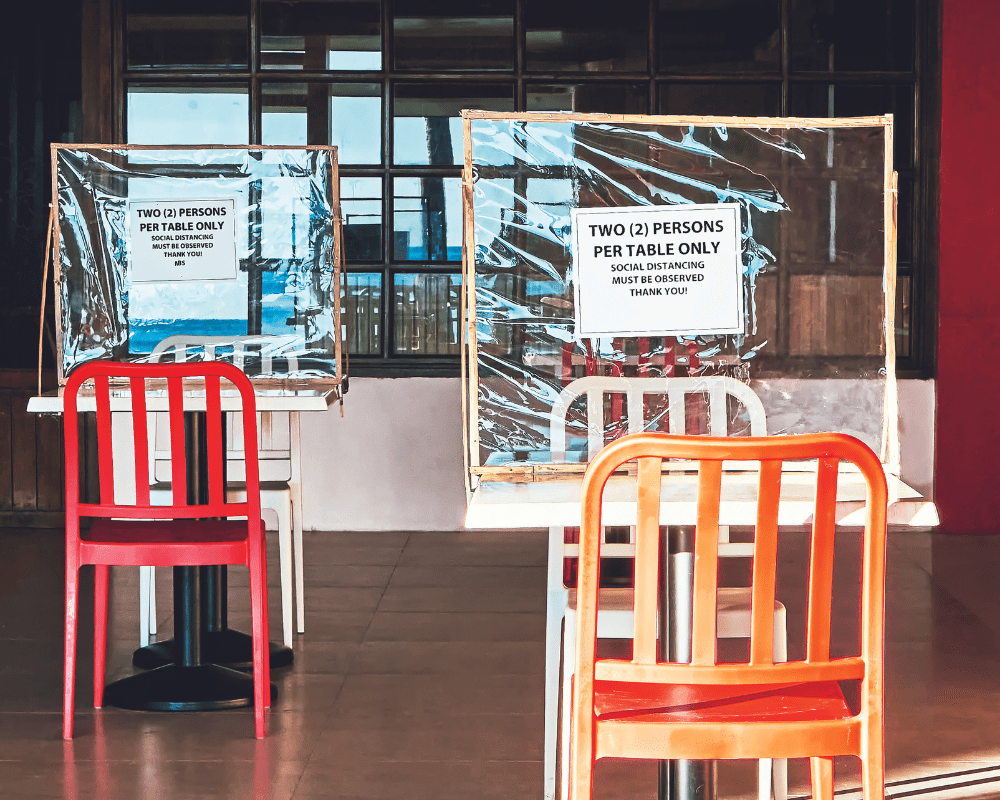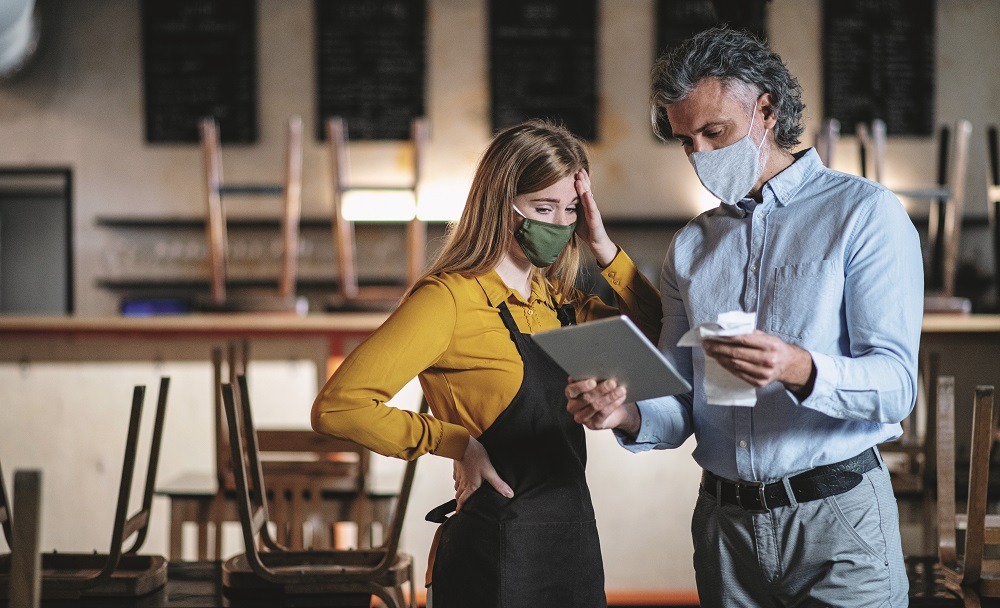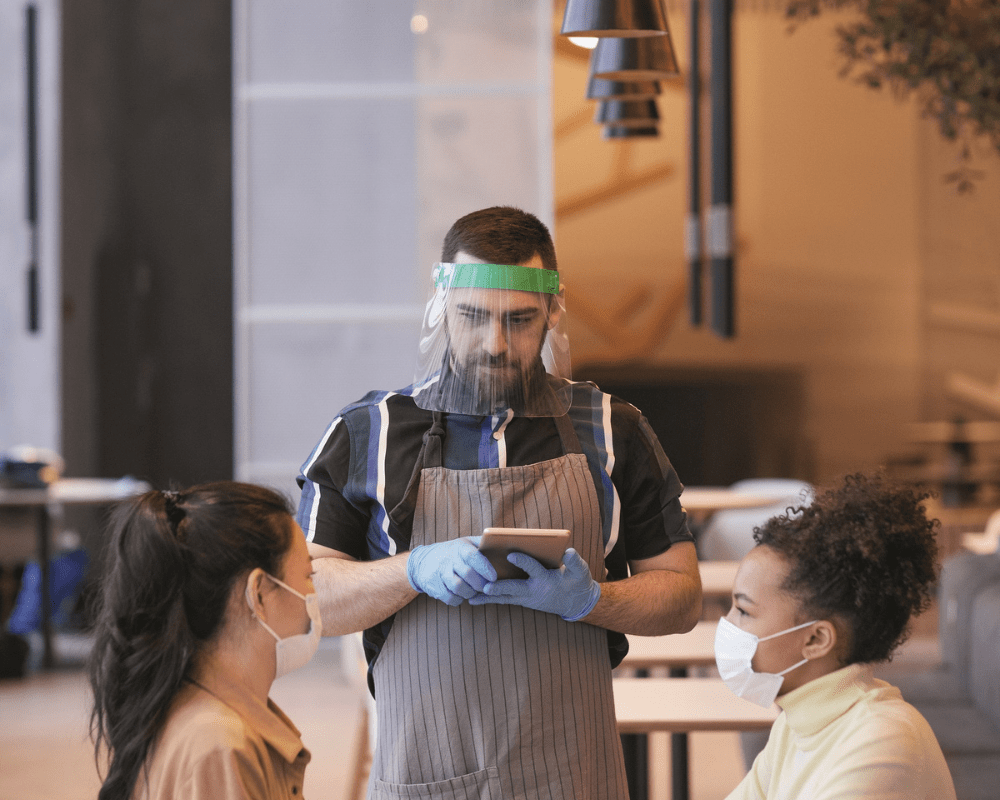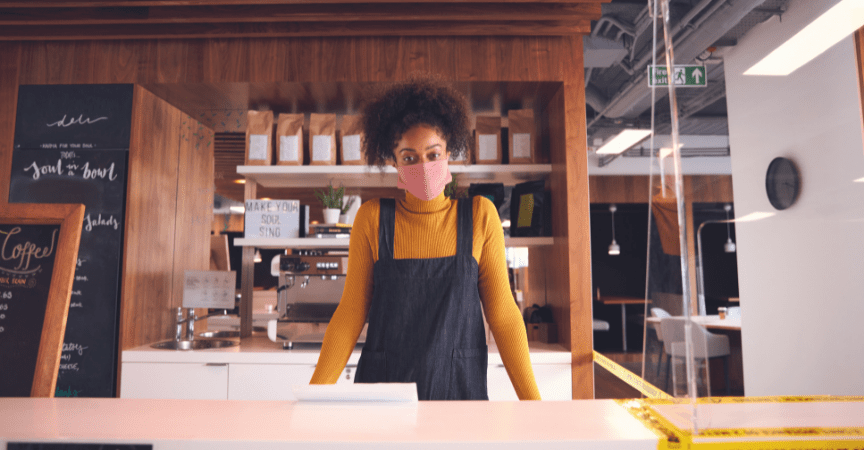Hit the Ground Running: Front of the House Prepping for Reopening
The timeline for a full reopening remains unclear in many parts of the country but, as lockdowns gradually lift, restaurants are cautiously preparing for the day when full-service operations will be permitted to resume. From heightened health and safety protocols to new staffing challenges, running a restaurant is going to look different in the post-COVID-19 era.
With that in mind, we turn to industry experts for advice on getting your business up and running again and preparing for the new normal of the restaurant industry.
How to Manage Health & Safety
Jack Minacs, Senior Account Manager for Workplace Safety & Prevention Services (WSPS), suggests that reviewing and revising your COVID-19 safety plan is a key starting point for operators getting ready to safely reopen their dine-in service. Although restaurants that have remained open for takeout already have some protocols in place, Minacs notes that updating this strategy regularly is essential in order to maintain health and safety.
“When you do your COVID safety plan, that doesn’t mean it’s done forever,” he says. “A big part of operating safely during this time is revisiting your plan on a regular basis and communicating those changes to your workers.” He recommends operators identify potential gaps and areas for improvement by comparing their existing plan to the guidelines outlined by their province, their local public health unit and the Ministry of Labour.
Mark Ambler, Infection Prevention Specialist at Diversey, recommends that operators consider four basic questions when building or revising their cleaning and disinfection strategy: “What is going to be cleaned? How is it going to be cleaned? Who is going to do it? And when and how often will it happen?”

Ambler says skipping the cleaning step when disinfecting surfaces is a common error to watch out for. “We know that sanitizers and disinfectants work more effectively on precleaned surfaces, especially greasy or heavily soiled surfaces,” he explains. “If we don’t clean them first and remove that soil, we don’t give the sanitizer and disinfectant the chance to get out the germs that are on that surface.”
After cleaning, Ambler says it’s important to follow-up with products that disinfect rather than simply sanitize. “Disinfecting and sanitizing are actually two very different things,” he says. “Sanitizers typically only address bacteria, whereas disinfection addresses the bacteria and viruses
and fungus as well.”
With many Canadians likely feeling hesitant about the safety of returning to restaurants, operators should also consider how best to communicate their health and safety protocols with their customers to enhance their comfort and peace of mind.
Ambler suggests that restaurants be “explicit in their demonstrations and communication of the specific measures they’re undertaking to prioritize guests.” This might include having signage throughout the space or allowing customers to review in-depth information about the restaurant’s health and safety strategies via QR codes displayed that the tables. “So I can hit that
with my phone and then it takes me to a broader explanation of how this table was cleaned or specific protocols that we have in place at this facility,” he explains.
Diversey is set to roll out its Diversey Shield program in Canada, which can also provide added reassurance for customers by demonstrating that the restaurant’s health and safety protocols have been verified by an independent third party.
“Our team is going to be able to give a restaurant sort of a stamp of approval to say they’ve gone through a basic auditing process with a Diversey representative,” says Ambler. Even as restrictions continue to relax, Ambler predicts that the pandemic has permanently changed the way customers view their safety when dining out and they will continue to hold restaurants to a higher standard of cleanliness than ever before.
“The challenge really now is that COVID has brought this heightened awareness and with it a heightened expectation from guests that you are prioritizing their safety,” he says. “People are going to be a lot less forgiving about any outbreak — COVID or not.”
Strategies for Staffing
Ongoing lockdowns and dining restrictions continue to leave many foodservice workers unemployed, yet Adam Morrison, president and CEO of the Ontario Tourism Education Corporation (OTEC) warns that a labour shortage is likely as restaurants begin to reopen. According to a recent survey of displaced hospitality workers conducted by OTEC, only 42 per cent of respondents reported they intend to return to the industry with the remainder reporting they’re seeking work in other sectors.

Morrison suggests operators strive to keep in touch with former employees they hope to rehire. “We see great examples of businesses that have been sharing updates, sharing what they know about the guidelines, making sure people are okay. And even, in some cases, trying to get them access to whatever support and professional development they can get,” he says. “We were very conscious early on that people would begin to drift away if they didn’t feel that they were engaged with the business.”
Jody Palubiski, CEO of Charcoal Group, says that maintaining communication with staff has been a top priority for his team throughout the pandemic. “We’ve kept our management team focused and onboard the entire time and had them communicating with the team on a weekly basis, reaching out and touching base, and being there to support them,” he says. “I can’t think of anything more important than coming out of the gate with a team that understands what made you successful before COVID; those people that can welcome the guests back because they know them, they have a connection with your business, and with your guests.”
Morrison suggests that ramping up retraining as soon as possible can be a strategic way to keep staff connected to your business while also taking advantage of downtime created by the gradual reopening process. “You double ROI in that you keep the workforce engaged, but also you’re not interrupting the business with training and other kinds of operational pieces when you get the chance to open,” he explains.
WSPS’s Minacs suggests operators begin by orienting new and returning staff with a formal training session and then continue to reinforce protocols regularly at pre-shift meetings. “You integrate health and safety strategies into the way that you normally operate your business,” he says. “It might be at that pre-dinner meeting: ‘here are the specials’ and then also include some safety in those messages. That way, it’s more effective and more efficient.”
Minacs adds that consideration of your staff’s mental health will be essential as the industry rebounds. “In this climate of COVID-19, mental health issues and violence and harassment have really risen to a high level of importance,” he says. “They should be treated just like any other workplace health and safety hazard. It’s really about opening up the dialogue and having those conversations and moving the culture forward so that these issues are addressed.”
In addition to turning more attention to your team’s mental health, Morrison says it’s important to consider the reasons why former staff might be leaving the industry. “Look at the other industries in your community or in your market that might be trying to lure your workers away and try and understand what they’re offering,” he suggests. “Sometimes that’s flexible shifts, sometimes that’s more stability, or more and more it varies depending on the persona of that employee.”
Ultimately, when it comes to re-attracting staff and rebuilding your team, Palubiski says that creating open communication channels with your employees is key. “I think they [staff] need to walk into scenarios where they feel comfortable, where they feel safe and where they feel valued. It’s going to be about showing patience, understanding and positivity.”
Optimizing Operations
Samir Zabaneh, chairman and CEO of TouchBistro, suggests there are a number of ways operators can optimize the efficiency and safety of their patio set-ups when preparing to reopen. He recommends starting by mapping out the movement of diners through the restaurant. “If possible, adjust flows for guests to go in a single direction to and from restrooms, order or pickup counters, sanitation stations, and into or out of the patio and restaurant,” he says, adding that signs delineating these directions can be helpful in maintaining physical distancing and simplifying navigation for diners.

If space permits, another option for promoting physical distancing is to set up serving stations at each table. “This eliminates servers reaching across the table, close to the guests, when delivering the food or clearing the table,” says Zabaneh. Operators that have previously opened for outdoor dining know how much rain can impede service. “For patios that are not covered, retractable awnings and large umbrellas are great options to provide shade when the sun is too intense and to protect guests from rain,” says Zabaneh, noting these solutions can shelter guests when needed but can also be easily removed to allow diners to enjoy the full sunshine on pleasant days.“Big umbrellas open on the patio is another way to let locals know it is now open,” he adds.
Implementing the right technology can enhance staff and guest safety as well as streamline service. “A reservations app can be a tremendous help in managing maximum allowed patio seating, informing guests of table availability and wait times, and ensuring social distancing,” says Zabaneh. This system can increase table turns while also reducing the number of diners congregating around the restaurant, waiting for a table. “Ideally, the app allows guests to make reservations online and receive text notifications
when their table is ready,” he says.
QR codes that diners can use to view the menu on their own devices are a simple step operators can take towards contact-free ordering. “Many restaurants use a POS that allows servers to take a tablet tableside to enter orders that are sent directly to the kitchen and to process payments. This speeds up order delivery and payment processing while cutting down on order entry errors,” Zabaneh adds. “A mobile POS also helps to reduce server congestion going back and forth to the kitchen or around a server station or payment terminal and has proven to increase table turns.”
Amid managing operational adjustments, Palubiski says it’s important not to lose sight of the reasons why diners are excited to return to their favourite restaurants. “If you’re doing your job right and practicing all the right protocols, they [diners] are quickly just letting themselves be taken care of,” he says. “There’s a fine line between informing and making them aware but at the same time letting them know they can just enjoy themselves.”
Zabaneh suggests that bringing back favourite menu items can be a great way to foster a sense of welcome and familiarity. “While a summer or patio special offering can be inviting, it’s a good idea to help guests feel a sense of comfort by providing something as close to the pre-pandemic restaurant experience as possible,” he says. “For example, feature your most-loved menu items or daily specials on your website and social media, including those drinks or dishes that could not be packaged for takeout or delivery.”
Ultimately, the key to success in the post-COVID-19 era is balancing new protocols and priorities with the timeless art of hospitality. “For those that are worried and for those that have questions, we want to answer them effectively and professionally,” says Palubiski. “But for those that want to sink in, we just want to take care of them and make sure that they are safe but let them have a great time.”









